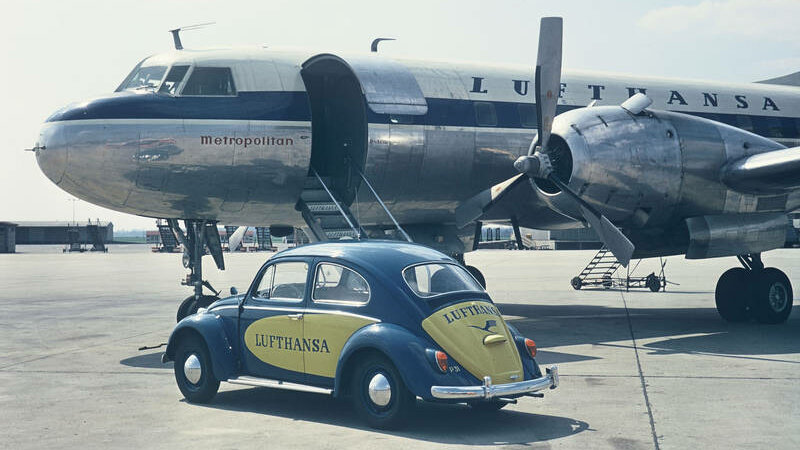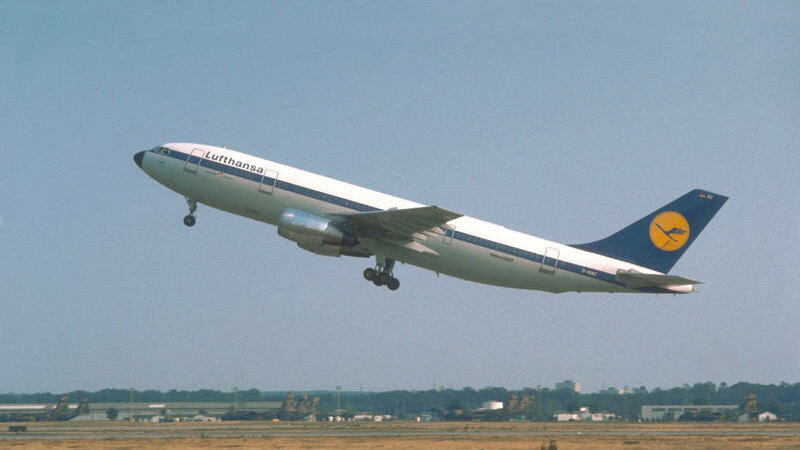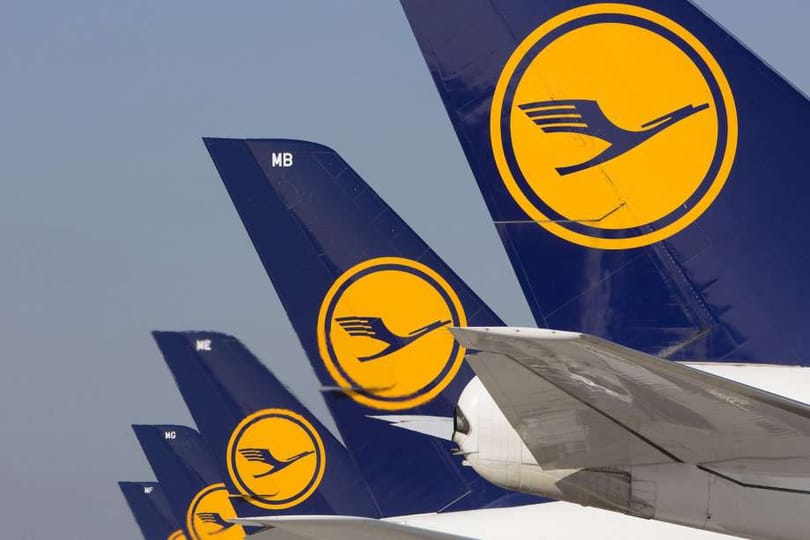Lufthansa is part of the success story of the Federal Republic of Germany, and an example to many airlines in the world. Lufthansa is truly global, but also truly German.
Without Lufthansa, world aviation may not be the same. Will Coronavirus be able to destroy this giant player in the airline industry?
Lufthansa German Airline and the Lufthansa Group may be preparing for bankruptcy. This was reported in the German magazine “Capital”
According to this report, the airline may be preparing for the German protective shield proceedings, known as “Schutzschirmverfahren”
German insolvency law, unlike US insolvency law, only recently introduced (in 2012) the so-called protective shield proceedings (Schutzschirmverfahren) to enable potentially illiquid and/or over-indebted debtors to restructure the company on the basis of a so-called insolvency plan. Thereby, the liquidation of a company by a future insolvency administrator can be avoided.
In general, protective shield proceedings are fairly comparable to US Chapter 11 proceedings. However, comparable to the history of Chapter 11 proceedings, the number of cases remains at a low level since 2012 compared to the absolute numbers of insolvency proceedings. The same applies to the numbers of debt-equity-swaps (DES) carried out under protective shield proceedings. But with regard to current debt developments and based on the facilitated formalities for DES under protective shield proceedings, it is expected that the number of cases of DES under protective shield proceedings will rise in the near future – similar to past developments in the US.
In particular, if the company is potentially insolvent but its core business operations are profitable, a DES under the protective shield proceedings becomes attractive, providing the creditors with direct participation in them, by either the acquisition of shares in the company or by DES.
In a DES, existing claims are used to acquire (newly issued) shares in the company.
The advantage of DES in such cases is obviously that outstanding debts are converted into equity, i.e. new shares (without any encumbrances) that are transferred to the creditors, cutting down the overall outstanding debt value, and hence, the company’s indebtedness. As the latter is one of two criteria for the determination of insolvency under German insolvency law (over-indebtedness or inability to pay its (due) debts), a reduction of the grade of indebtedness may also lead to the termination of insolvency proceedings and enable the company to resume normal business operations.
Such a DES generally is executed by a four-step-plan.
- Firstly, the existing shareholders pass, in the shareholders meeting, a shareholders’ resolution increasing the registered capital of the company and issuing new shares.
- To increase the registered capital, the company needs an equivalent contribution to its capital account by either a payment or a so-called contribution in kind.
- Such contribution in kind, in the case of a DES, is done by interested creditors of the company by way of transfer of their claims against the company to this company.
- The new shares will be distributed exclusively to the creditors participating in a DES, who become the new shareholders of the company.
This move is parallel to the request by Lufthansa to secure 9 billion euros in government rescue funding due to the Corona-19 epidemic. Experts think such a rescue package would give the government massive influence over the operation of the German national carrier.
Lufthansa hired Mr. Arndt Geiwitz, a known attorney specialized in restructuring and out of court insolvency administration, restructuring mediation and trust litigation.

Arnd Geiwitz
Also the name Lucas Flöther was mentioned as an administrator. Mr. Flother was the Air Berlin administrator and was also appointed trustee in self-administration over German airline Condor after it filed restructuring proceedings in Frankfurt to shield its business from the collapse of parent Thomas Cook.

Lucas Flother
Such a move by the German Airline may come forward as soon as next week.
Lufthansa hired a U.S. consulting firm Boston Consulting Group. Boston Consulting Group is an American management consulting firm founded in 1963. The firm has more than 90 offices in 50 countries, and its current CEO is Rich Lesser. BCG is one of the three biggest employers in management consulting, known as MBB or the Big Three.
The Lufthansa Group is an aviation group with operations worldwide. With 138,353 employees, the Lufthansa Group generated revenue of EUR 36,424m in the financial year 2019. The Lufthansa Group is composed of the segments Network Airlines, Eurowings, and Aviation Services. Aviation Services comprises the segments Logistics, MRO, Catering and Additional Businesses and Group Functions. The latter also includes Lufthansa AirPlus, Lufthansa Aviation Training, and the IT companies. All segments occupy a leading position in their respective markets. The Network Airlines segment comprises Lufthansa German Airlines, SWISS and Austrian Airlines.
Lufthanza traces its istorija to 1926 when Deutsche Luft Hansa A.G. (styled as Deutsche Lufthanza from 1933 onwards) was formed in Berlin. DLH, as it was known, was Germany’s flag carrier until 1945 when all services were terminated following the defeat of Nazi Germany.

Two years after the Allies dissolved the first Lufthansa (founded in 1926) in 1951, the “Aktiengesellschaft für Luftverkehrsbedarf” (Luftag) with headquarters in Cologne was founded on January 6, 1953. On August 6, 1954, Luftag bought the name, the trademark – the crane – and the colors – blue and yellow – from the first Lufthansa, which was in liquidation at the time, and has since then called itself “Deutsche Lufthansa Aktiengesellschaft” (Deutsche Lufthansa Stock Company). Multiple tasks had to be accomplished by the new airline before it could begin flight traffic: finding and buying suitable airplanes, schooling airline pilots and engineers, and training air stewards. Organizational and infrastructural prerequisites for the technical maintenance of airplanes also had to be set. The ambitious project succeeded: on April 1, 1955, two Convair airplanes took off from Hamburg and Munich to commence scheduled air services.
Parallel to the development of a European route network, flights to destinations in America, Africa, and the Far East have also added shortly after. Since 1958, the red rose has stood for the fulfillment of the highest comfort requirements in First Class on intercontinental routes.
In 1960, Lufthansa arrived in the age of the jet plane with the acquisition of the first Boeing B707. Simultaneously, the company transferred its long-distance operations from Hamburg to Frankfurt am Main and continued to expand its cargo business.
This expansion was followed by a decade of crises, but also of developments. First, the oil crises of 1973 and 1979, which made the prices for kerosene explode. At the same time, it created a new understanding of how resources are handled and thus drove the development of fuel-efficient and quieter jet engines forwards.

Time and again Lufthansa offered innovations to their growing customer base: Wide-body aircraft with the latest technology were bought. In 1970, the Boeing B747 was deployed for the first time on long-haul routes followed by the tri-jet Douglas DC 10, and from 1976 the Airbus A300, the first wide-body twin-engine jet for medium distance flights.
The airplane developed into a means of mass transportation. Lufthansa reacted by redesigning its route network with faster connections and fewer stopovers.
Women also conquered the cockpits at Lufthansa with the training of the first two female pilots in 1986.
In the second half of the 1990s, the corporate group was faced with huge changes. On the one hand, in 1995 Lufthansa Technik AG, Lufthansa Cargo AG, and Lufthansa Systems GmbH were transformed into independent companies of the aviation group, and on the other hand, in 1997 Lufthansa was finally privatized. Both were meant to increase the group’s competitiveness and contributed to Lufthansa’s long-term strategy of developing into the worldwide leading provider of air travel and air travel contiguous services.
ŠTA UZIMATI IZ OVOG ČLANKA:
- As the latter is one of two criteria for the determination of insolvency under German insolvency law (over-indebtedness or inability to pay its (due) debts), a reduction of the grade of indebtedness may also lead to the termination of insolvency proceedings and enable the company to resume normal business operations.
- In particular, if the company is potentially insolvent but its core business operations are profitable, a DES under the protective shield proceedings becomes attractive, providing the creditors with direct participation in them, by either the acquisition of shares in the company or by DES.
- But with regard to current debt developments and based on the facilitated formalities for DES under protective shield proceedings, it is expected that the number of cases of DES under protective shield proceedings will rise in the near future – similar to past developments in the US.







![Kineski voz Hyperloop: Uvid u budućnost transporta 5 Vijesti o turizmu | Domaći i međunarodni Hyperloop Train Kina [Fotografija: Hyperloop Transportation Technologies]](https://eturbonews.com/cdn-cgi/image/width=145,height=100,fit=crop,quality=80,format=auto,onerror=redirect,metadata=none/wp-content/uploads/2024/02/180720163348-hyperlooptt-china-capsule.jpg)















